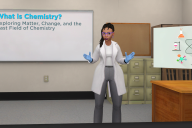You have /5 articles left.
Sign up for a free account or log in.

Istockphoto.com/FotoCuisinette
A new semester means a fresh start, an opportunity to atone for past mistakes or aspire to new heights. Professors across the country want to find new ways to engage their students, and some believe technology can help them achieve those goals.
"Inside Digital Learning" reached out to instructors in a wide range of disciplines (and in one case, a pair of librarians) to find out what's new in their teaching this semester, and how they plan to determine whether their efforts are paying off.
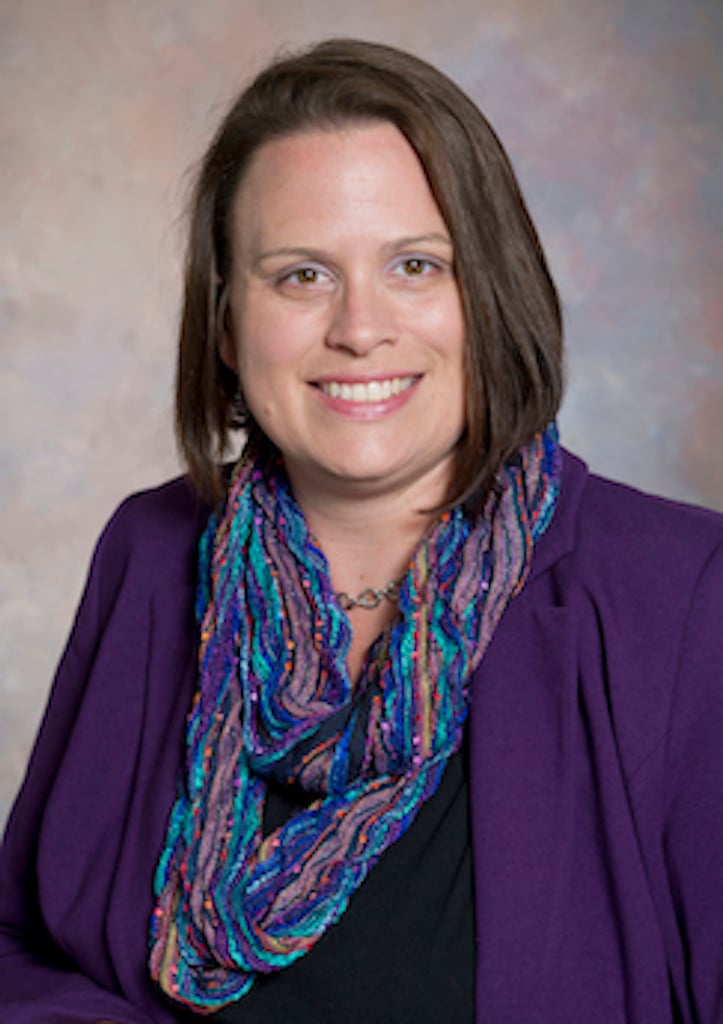 Sandi Connelly, leader faculty in online learning in science, Rochester Institute of Technology
Sandi Connelly, leader faculty in online learning in science, Rochester Institute of Technology
What's new: I’m using two pieces of technology to better engage my classes, both online and face-to-face.
Firstly, I’m using Microsoft Translator, an AI-powered automatic speech recognition (ASR) software tool that uses a library-trained algorithm to generate real-time captioning, in my online class. Translator was initially onboarded to assist the deaf and hard-of-hearing students in our classrooms, but I have found that it significantly benefits all of my students -- especially those for whom English is a second language and those who struggle to focus on materials. It will allow students to interact better with one another and with me during review sessions and virtual office hours.
I’m also launching JoVE Core Bio (beta) in my courses, an interface that provides opportunities for students to explore content through text, quizzes, assignments and countless videos of research being done in the field. The videos and the lower price point (compared with textbooks) are what really sold me on the product. JoVE Core Bio has the potential to make nonmajor biology students feel like real scientists and engage them with cutting-edge research. The research vignettes that demonstrate techniques are putting the “Wow!” of science back into my classrooms -- in person and online.
Why: I am constantly looking for ways to engage the students with the use of multimedia. Giving students options for their learning path and letting them choose -- reading, videos and engagement in research -- makes the learning more personal and applicable to them.
I am looking for increased engagement with materials in my courses, for increased application of content knowledge and for increased student satisfaction with their own learning. Further, I am hopeful that this will also make it easier for students to get that “wonder” about science.
Measuring success: I’ll be looking at the qualitative analysis of student responses on written exams. Going beyond multiple choice, how do students apply their knowledge to scenarios that weren’t presented in the course materials? This level of critical thinking is often overlooked in courses for nonmajors, and we are doing them a disservice by continuing this trend.
Why experimentation is valuable: We have to be on the constant lookout for what will help us build our leaders of tomorrow -- who just happen to be taking a nonmajors bio course for some elective credit. Our courses should help build students into effective communicators and practitioners of science in the future, regardless of what they want to do in their careers.
 Stephen Ely, associate professor of medical education, Nova Southeastern University
Stephen Ely, associate professor of medical education, Nova Southeastern University
What's new: The Nova Southeastern University Dr. Kiran C. Patel College of Allopathic Medicine (NSU MD) welcomed our first class of 53 doctor of medicine students in July 2018. As a new medical school, we have the opportunity to develop from the ground up.
Johannes Vieweg, dean of NSU MD, recognized the unique opportunity to create a medical curriculum that integrates medical education, research, patient care and community engagement to fulfill a mission of advancing human health through innovation. A diverse faculty of medical education specialists, researchers and physicians asked the question “What will tomorrow’s physicians look like?”
We have developed our curriculum with a goal of shaping our graduates to become master adaptive learners: self-directed, lifelong learners, adept at (self-)assessment, critical thinking, reflection and adaptation on an ongoing basis. We have designed an integrated curriculum that is a hybrid of lectures; small-group learning sessions (seven to eight students), which utilize problem-based learning; and team-based learning formats as a flipped classroom where students are responsible to themselves and their teams for learning. Our goal is for our students to celebrate diversity, be champions of underserved populations and be poised to push the envelope of medicine through service, research, technology, innovation and leadership.
Through our innovative curriculum and integration of ethics, humanities, genomics, interprofessional collaboration, biomedical informatics, leadership, population heath, societal problems and cultural competencies, we are setting our students up for success as measured by national standardized board examinations, obtaining competitive residency positions, and becoming competent, compassionate physicians, and leaders in medicine.
Technology plays a major role in modern health care, and we have embraced the use of technology to facilitate teaching and training our students through the use of iPads, ebooks, handheld ultrasound equipment, smart TVs and 3-D anatomy software with augmented reality. Simulation activities allow students to engage in clinical scenarios using preprogrammed interactive mannequins to prepare them for performing procedures and real-life clinical encounters.
More from "Inside Digital Learning"
What online teachers have learned from teaching online.
How to convince faculty members to teach online.
A medical college is transferring face-to-face games to its online courses.
Our goal is to train our students to be not only proficient in clinical problem solving, but comfortable with the use of digital diagnostic tools, electronic medical records and future technological advancements. We will develop physician leaders who embrace the integration of technology into the practice of medicine.
Measuring success: NSU MD adopted a digital curriculum management system that provides comprehensive solutions for our curriculum design, implementation and improvement, enabling us to:
- Track the what, when and how of classroom instruction by providing an accountability system for self-directed student learning.
- Find out where competencies, standards and topics are missing from a single course, an entire year or throughout the curriculum, and the exact places where improvements can be made.
- Provide a complete assessment and evaluation management and administration system for creating forms and rubrics related to evaluating courses, students, preceptors, clinical sites and instructors.
- Manage and administer tests. Students take tests securely online (through iPad or computer), and faculty analyze and report on how the program is performing against specific standards in real time.
- Align curriculum objectives, test questions to national medical educational objectives and competencies, and monitor students and programs with detailed reports to identify areas for improvement.
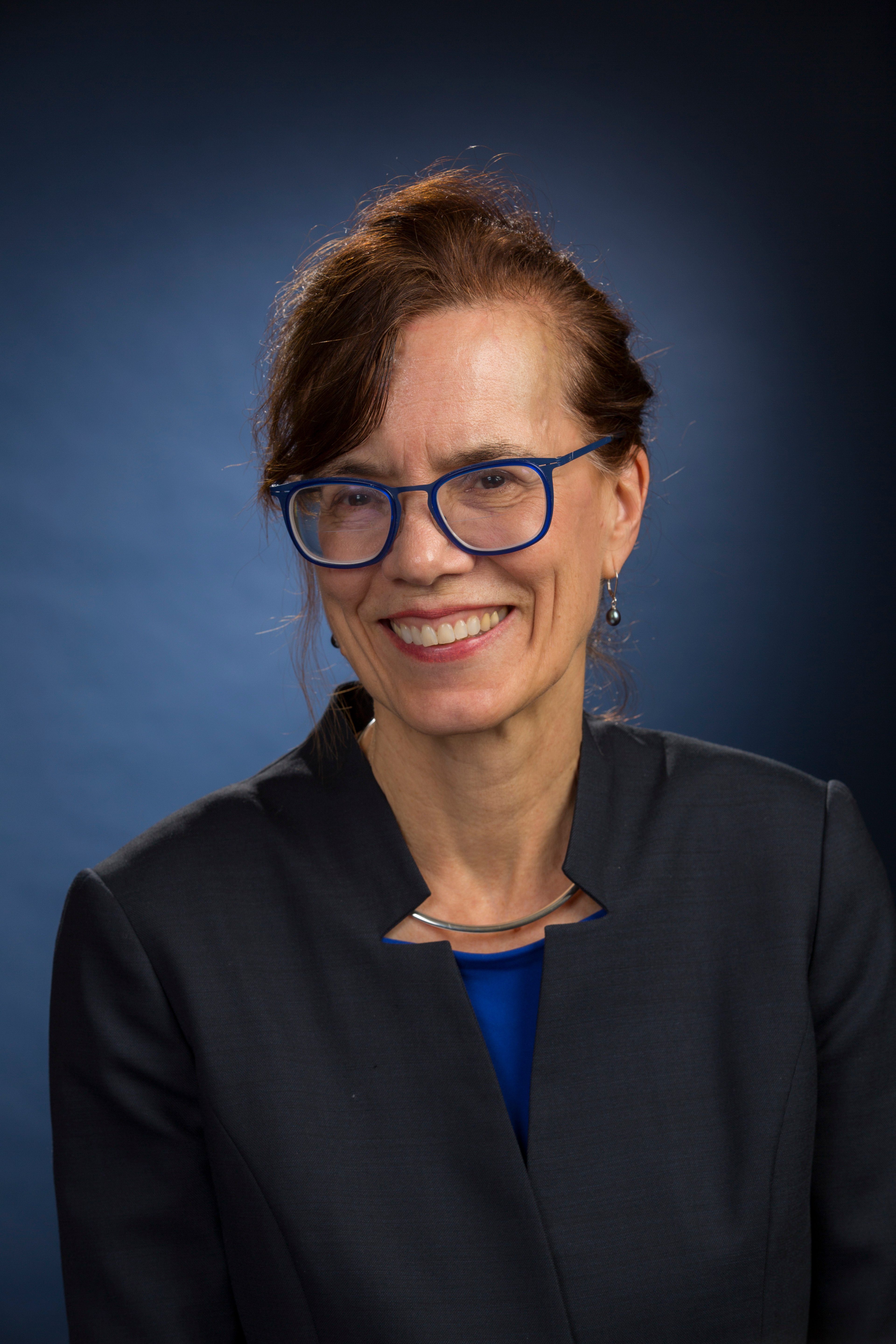 Anna Gold, university librarian, Worcester Polytechnic Institute, and Lori Ostapowicz Critz, associate director for library academic strategies, Worcester Polytechnic Institute
Anna Gold, university librarian, Worcester Polytechnic Institute, and Lori Ostapowicz Critz, associate director for library academic strategies, Worcester Polytechnic Institute
What's new: Gordon Library has created the first digital scholarship lab at Worcester Polytechnic Institute. WPI is a 150-year old STEM-focused institution with a unique curriculum, one that unites theory and practice and that’s centered on project-based learning across all disciplines. We have outstanding humanities and arts faculty, and they’re doing exciting work in digitally documenting communities, digital textual analysis and more. For example, Professor Joe Cullon directs Digital Worcester, a collaborative digital public history clearinghouse; and Professor Jim Cocola is developing digital maps/gazetteers for the study of long poems, as part of his "Mapping the Long Poem” project.
 Why: Our faculty had competing needs: they wanted a controlled work and research space, with special software and equipment. They also wanted a seminar-sized teaching space where learning could happen as part of a class, a project team, between peers (faculty or students!) or self-directed learning. We saw an opportunity to do both. We redesigned a traditional library instruction lab as the Shuster Lab for Digital Scholarship in six months, and at a relatively modest cost. The space enables collaborative work across the life cycle of a digital project -- from storyboarding and preparing print materials to be digitized, to digitizing myriad types of material -- 3-D objects, large-scale maps and photographs -- to postprocessing images, to using specialized software to curate and showcase digital collections.
Why: Our faculty had competing needs: they wanted a controlled work and research space, with special software and equipment. They also wanted a seminar-sized teaching space where learning could happen as part of a class, a project team, between peers (faculty or students!) or self-directed learning. We saw an opportunity to do both. We redesigned a traditional library instruction lab as the Shuster Lab for Digital Scholarship in six months, and at a relatively modest cost. The space enables collaborative work across the life cycle of a digital project -- from storyboarding and preparing print materials to be digitized, to digitizing myriad types of material -- 3-D objects, large-scale maps and photographs -- to postprocessing images, to using specialized software to curate and showcase digital collections.
What they hope to accomplish: We hope to be surprised! We planned the space to allow many activities to coexist, adapting to different needs as they emerge. We settled on inspiring but straightforward technologies: lots of whiteboards, 12 high-end workstations, two huge wall-mounted screen displays, Wi-Fi screen-sharing software, large-format and sheet-fed scanners, and a small but sophisticated multipurpose docucam. We hope this space will inspire people to learn and practice ways to digitally transform, create and share knowledge.
Measuring success: This year we want to learn what our students and faculty find most inspiring, useful and productive about the lab. Based on observations, qualitative feedback and usage statistics, we want to understand how this resource can have an impact on student opportunities to create new knowledge, and faculty opportunities to lead and conduct research. We’ll consider a busy and active space successful.
Why experimentation is valuable: The entrepreneurial mind-set is a driving force at WPI: just see WPI’s new Foisie Innovation Studio. We look for opportunities to add important value through digital technologies across all majors. Through experiment and collaboration, we’ll contribute to WPI’s unique innovations in learning.

What's new: I am using a new automated platform to support my use of team-based learning in my law school classroom. I have been using team-based learning for a little over a year now and love the concept but felt a bit overwhelmed at managing some of the processes -- especially the teammate peer-review process. This summer, I discovered InteDashboard, a new online platform developed for the specific purpose of supporting team-based learning. I was originally drawn to the solution to the team peer-review challenge (collecting, calculating and redistributing quantitative and qualitative team peer reviews, while maintaining the anonymity of the process). However, I was also drawn to the ease and effectiveness of the way the platform handled the readiness assurance testing process.
In the past, I’d used a combination of Socrative for individual administration and IF-AT cards for the team portion, all of which worked, but the process was cumbersome in administration and recording of results. With InteDashboard, the students and I get instant feedback, which of course helps to facilitate the corrective process in giving these tests. The platform has some additional features, which prospective users can explore on their own, but these two convinced me to try it, and I’ve been very happy with the results so far this fall.
Measuring success: I am already convinced of the effectiveness of team-based learning, so my primary objective here was to make the process more efficient and effective as a formative tool for student learning. I know it has made the process much easier for me to deliver and manage the team-based learning experience, and I believe the student experience has been improved as well. Thus far, the feedback from students has largely been anecdotal, but I expect to learn more in our broader course evaluation process.
Why experimentation is valuable: I think it is important to experiment with new digital technology (InteDashboard is in beta version) to be able to take advantage of the learning opportunities such technology presents. Of course, new technology is not always the answer -- I am also a big fan of mini whiteboards. However, by tracking the newest digital technology, I am often able to be more innovative in delivering the best possible teaching and learning experience to my students. In fact, the very process of considering new technology forces me to consider my teaching and learning methodologies on an ongoing basis, which keeps the methodologies themselves current and fresh.
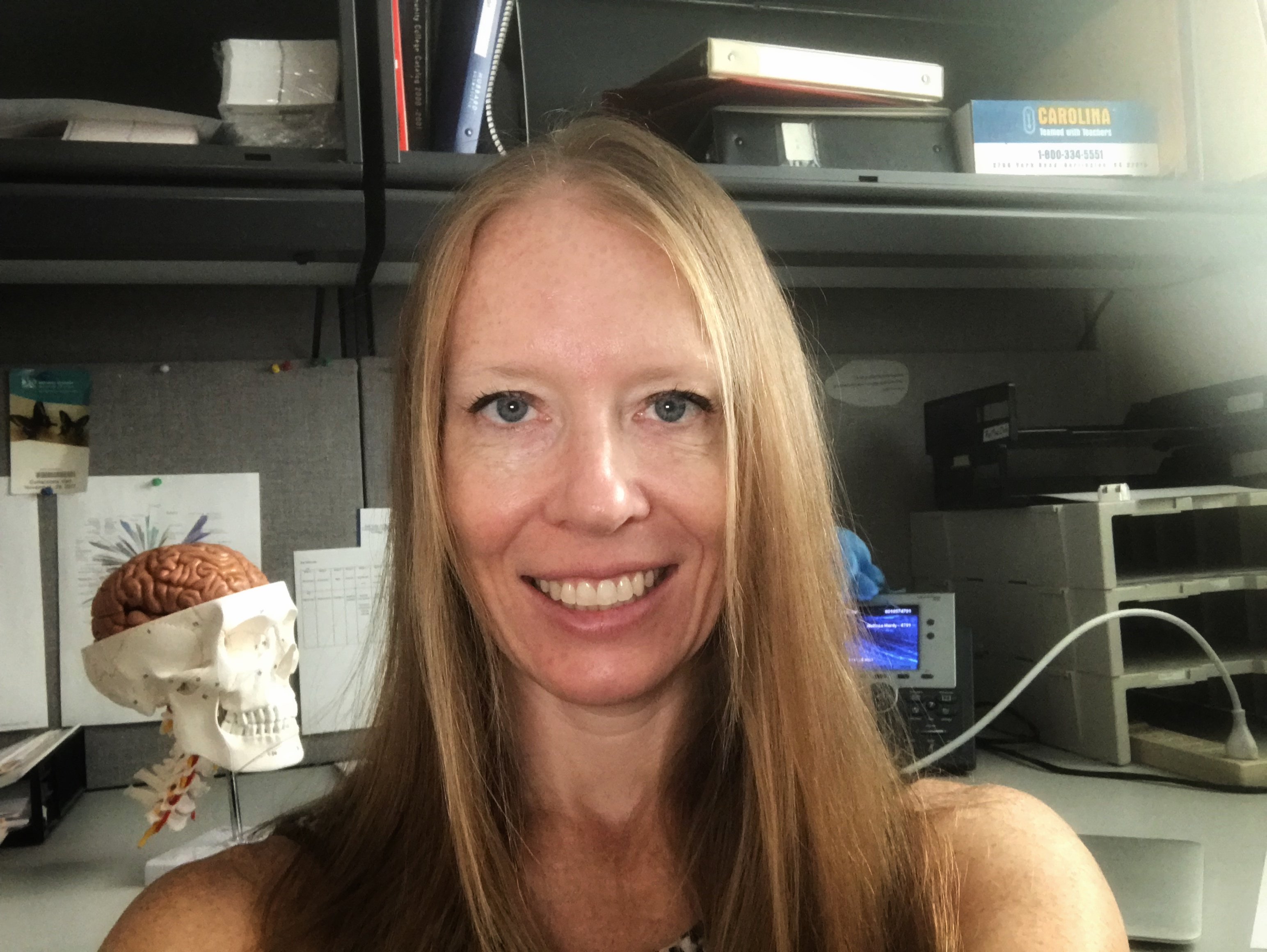
What's new: When I became lead instructor last year for a biology laboratory course, I found that the lab manual was outdated, confusing and boring. It was also expensive -- students were paying over $100 for the required manual. To address this, my colleague Bill Tanner and I wrote a new lab manual from scratch. We now provide it free via Canvas. This semester, we are testing and revising our protocols in collaboration with our students.
Writing a lab manual was an enormous amount of work, but we decided to go ahead, knowing that we could improve student engagement by offering a lab course that was well aligned with the lecture course it accompanies. We also wanted to reduce the burden of textbook costs for our students
Measuring success: We are already seeing excellent results. The lab manual is now free, and students have given us extremely positive feedback on the lab activities. Just last week, a student told me, “This is the greatest lab I’ve ever had.”
To measure student engagement, we surveyed students in the semester prior to lab manual adoption and during the first semester of adoption. But for us the real measure of success is seeing our students excited and engaged in the lab activities each week. Additionally, we are saving our students about $7,000 per semester in textbook costs.
Why experimentation is valuable: I am excited to be replacing traditional textbooks with OER, and I feel very lucky to be teaching at an institution that supports faculty efforts to create and use OER. It reduces the outrageous costs of education for our students and allows us to keep the content fresh and up-to-date. I am looking forward to releasing this lab manual to one or more OER repositories under an open license so that other instructors can reuse, revise and remix our material.
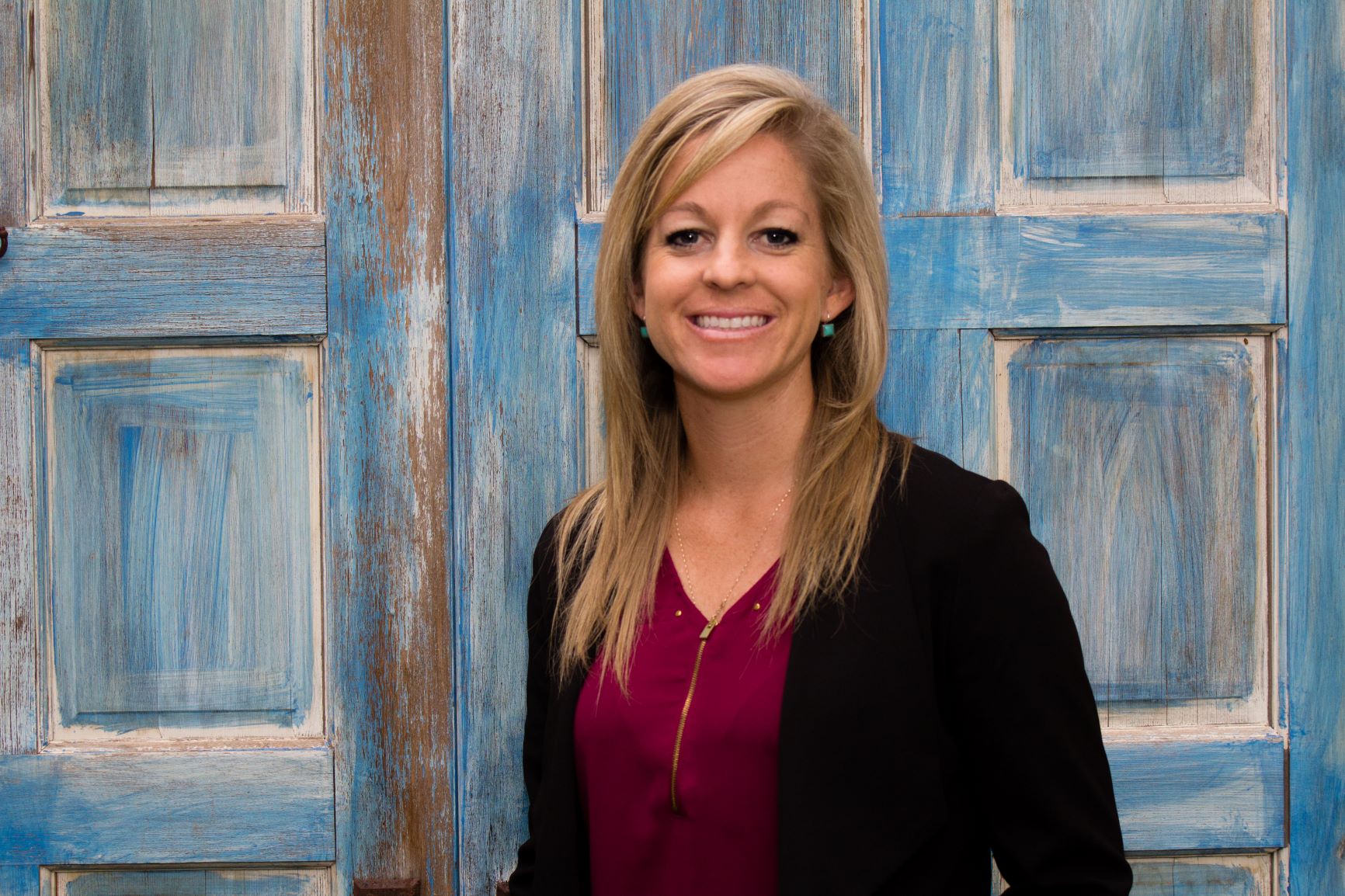 Elizabeth Howard, program manager of student affairs, New Mexico State University College of Engineering
Elizabeth Howard, program manager of student affairs, New Mexico State University College of Engineering
What's new: New Mexico State University’s College of Engineering was awarded an Active Learning Center grant from Steelcase Education for the fall of 2018. With the Steelcase grant, we refurbished a 1,000-square-foot, traditional-setting classroom -- passive and old-school with desks lined up in straight rows facing a lectern -- into an active learning environment for Engineering 100 students. Our goals for the new Active Learning Center are: collaboration, removing barriers to learning (physical and organizational), ensuring students get the help they need to complete difficult assignments, and helping students develop the interpersonal and intrapersonal skills they need to excel.
Why: The traditional lecture-style setup of the room did not suit the collaborative nature of Engineering 100. The active learning classroom is specifically designed to support multiple, simultaneous activities. In the real world, engineers don’t work in a vacuum. They work with teams of people who complement each other. In the Steelcase classroom, NMSU students will problem solve together -- working on projects from pulley design competitions to MATLAB coding assignments -- at tables of four featuring whiteboards while sitting in mobile chairs that allow them to move freely. By transforming the classroom into an active learning space, we are building on our efforts to better engage and serve our students, matching the environment to the already-collaborative nature of Engineering 100.
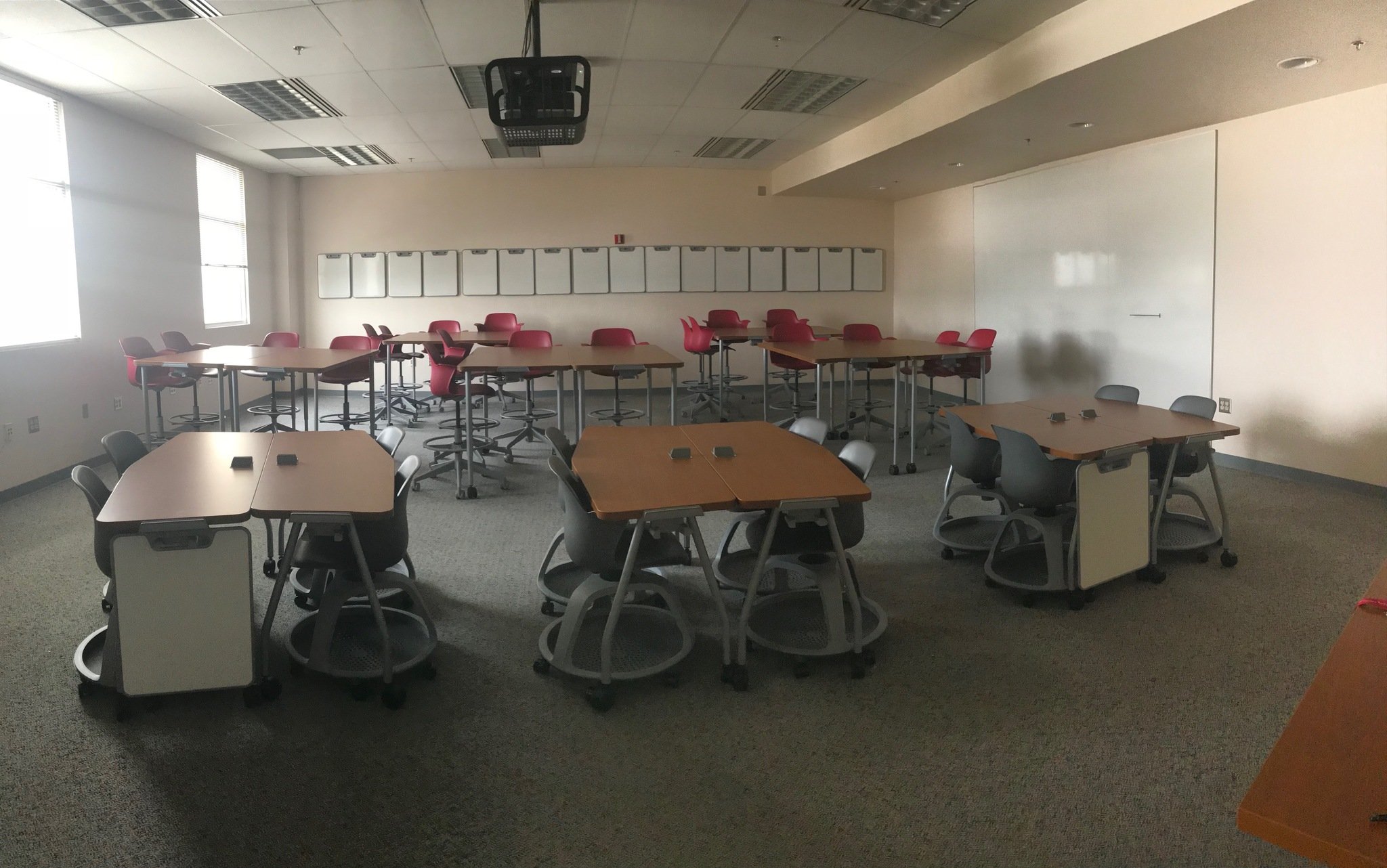 We are hoping to increase retention of engineering students from freshman to sophomore years, and specifically among minority populations like Hispanic women.
We are hoping to increase retention of engineering students from freshman to sophomore years, and specifically among minority populations like Hispanic women.
Measuring success: The College of Engineering is tracking freshman students who have class in the active learning classroom in comparison to students who are in a traditional setting classroom to determine if the classroom setting and teaching style (student led versus professor led) has an impact on freshman retention. We also will be looking at the classroom impact on Hispanic women.
NMSU will utilize classroom observations and teacher and student surveys to determine the impact of the Steelcase active learning classroom.
Why experimentation is valuable: In 2014, the engineering school created an intentionally collaborative space where freshmen can get academic and personal support after class. Administrators partially credit the supportive, mentoring environment to a 5 percent rise in the number of freshmen persisting into their second year of engineering. We believe active learning classrooms will accelerate retention levels as well.
 Vera Kennedy, sociology and education instructor, West Hills Community College Lemoore
Vera Kennedy, sociology and education instructor, West Hills Community College Lemoore
What's new: I have written an original OER textbook entitled Beyond Race: Cultural Influences on Human Social Life for our SOC 5 Cultural Sociology course at West Hills College Lemoore. The project took a year to develop, pilot with students and undergo peer review. This fall, I am teaching with the final published manuscript that examines sociological terms, concepts, theories and research in the study of culture.
Why: I wrote the OER text to fill a gap in available resources on cultural sociology and topics such as social construction of culture; hegemonic cultural production; identity development related to age, disability, ethnicity, gender, geographic region, race, sex, sexuality and social class; and methods for building cultural intelligence. OER provides students open access to free, quality resources online that engage and promote learning.
In some cases, students who cannot afford the price of textbooks are not buying required materials. Instead they're relying on lectures, class notes and the internet to learn course content, increasing the achievement disparity between the students who have access to resources and those who do not. By writing and sharing an OER book, I am working to help address textbook affordability and reduce the equity gap.
Measuring success: Each semester I ask students to complete a course reflection that examines both quantitative data regarding use and access, and qualitative data on personal learning experiences including challenges with the material or method of delivery and instructional approach. I have used this tool in traditional courses for 11 years and OER courses for five years to measure learning and gather information on ways to improve my courses and materials. Additionally, I measure and assess student learning outcomes, student success, retention and completion against institutional and statewide data.
Why experimentation is valuable: In the teaching profession, we must learn and adapt with the needs of our students. Today’s student is seeking instructional methods and approaches that are relevant to workplace needs, which translates to students requesting and choosing courses and instructors who use technology-based learning approaches.
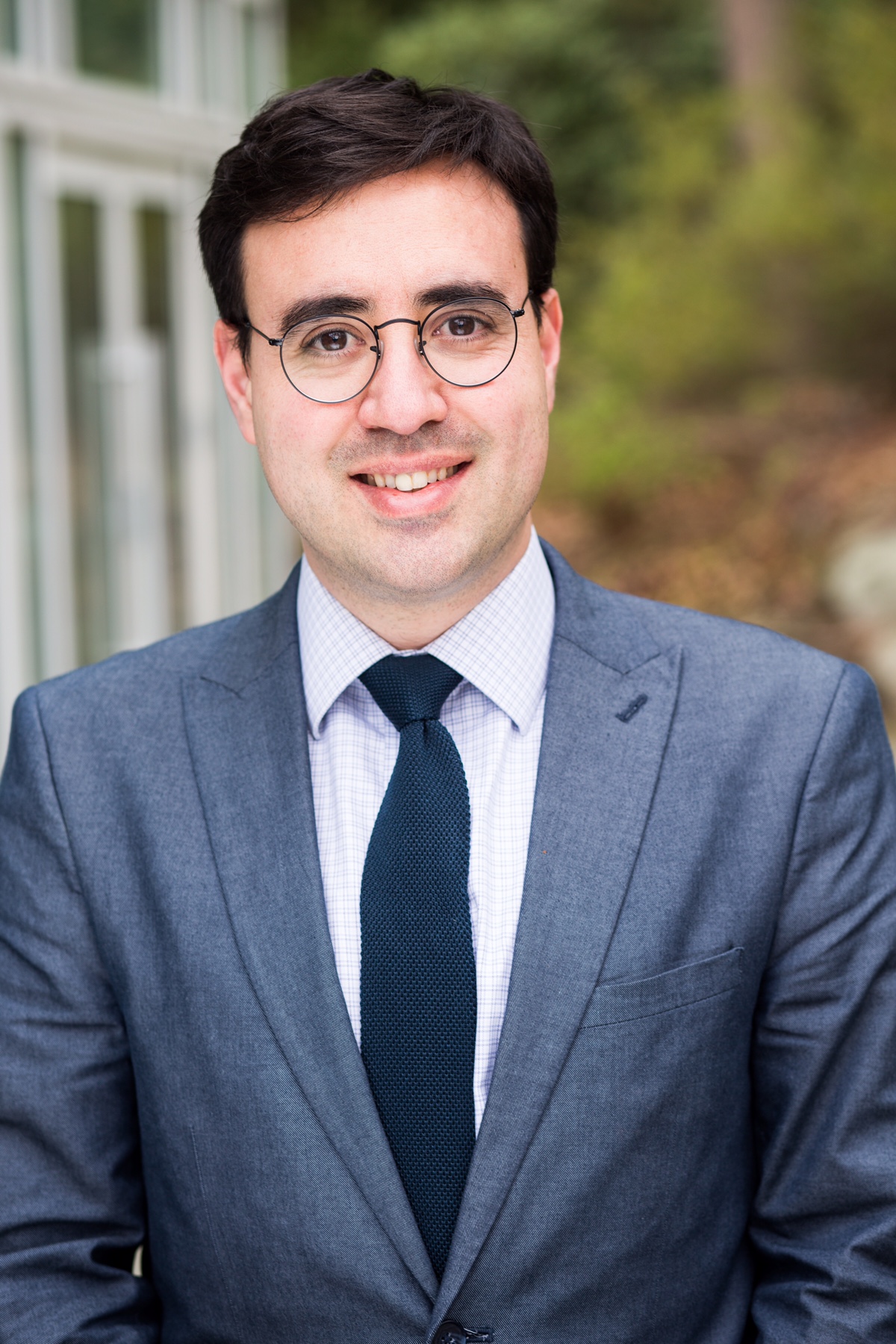 Ruben Mancha, assistant professor of information systems, Babson College
Ruben Mancha, assistant professor of information systems, Babson College
What's new: This semester, in my graduate information technology course in the M.S. of entrepreneurial leadership, I will incorporate new internet of things (IoT) prototyping kits, and the exploration of the latest virtual reality technologies and wireless electroencephalography (EEG; to detect electrical brain activity).
The course is primarily experiential. I expect students not only to understand the technologies, but also to be willing to explore them, experiment and prototype business solutions.
Why: I create these experiences with three learning objectives in mind. The first objective, the most typical in IT courses like this one, is to study technologies, explore their capabilities and development, and understand their business use cases and social impact. The second objective is to help students "learn how they learn" new technologies. For example, by having students to play with IoT technologies in an unstructured environment, they have to seek resources to learn some programming and build prototypes. While I offer technical support, I am always surprised at how resourceful they become at finding solutions with minimal input. The third objective is to make students confident technology explorers. Most of my students do not have a technical background, and experiential activities are critical for them to gain confidence in their ability to learn and innovate with the latest technologies. The last two goals, I believe, are the most important ones -- while I cannot anticipate the technologies my students will face in their careers, knowing how to learn new technical concepts and unwavering confidence on their own ability to learn these technologies will not become outdated skills.
Measuring success: These explorations result in many good prototypes and business ideas, some of which become start-ups. But, to me, the experiment is successful if students spend the time thinking about and learning these new technologies, and gain confidence. Their work in teams, several presentations and one-to-one conversations help me assess if the students are reaching the learning objectives.
Why experimentation is valuable: As a technology professor, it is important to me to explore the latest digital technologies and bring them into my classes. I find only a fine-tuned balance between theory, the study of cases and experimentation prepares our graduate students to make the most of the technologies to come.
 Robert Meeds, associate professor of communications, California State University at Fullerton
Robert Meeds, associate professor of communications, California State University at Fullerton
What's new: We’ve reinvented our Digital Foundations course, transforming it from an elective class that was taught face-to-face to a required online course that includes video lectures, video tutorials and interactive PDF readings, as well as project assignments. The online format is supplemented with weekly one-hour lab sessions that allow students to ask questions, get feedback on their work and troubleshoot software or technology problems. For communications students, acquiring digital skills means they are able to generate the various types of digital media (video, graphics, etc.) using industry-standard software such as the Adobe Creative Cloud.
Why: We’re requiring communications students to take Digital Foundations because almost all communications they’ll create in their future careers will be designed and delivered using digital platforms. For that reason alone, we felt it was important to deliver the content in the formats we’re expecting our students to use. It also makes sense for us to teach the class online because as one of the largest communications departments in the country, we expect to have more than 800 students taking the class each year. Logistically, it’s not possible to find enough lab space for a required course of this size. Plus, a lot of our students are either working or commuting, so they appreciate the more flexible format. We’re also creating all the content, including the interactive PDF readings, so students don’t even have to buy a textbook.
This course will provide all students with a solid foundation in digital skills that they will need as they advance to midlevel and capstone classes. Ultimately, we’re aiming to graduate communications professionals who are better prepared to succeed the workplace.
Measuring success: While the class is primarily online, the weekly short lab sessions are an important component. Through these we can get immediate feedback on how well the students are grasping the material and what we need to do to improve the instructional format. In terms of student success, we have developed a set of learning assessments that we’ll track in this class and continue to measure in upper-level classes.
Why experimentation is valuable: There are three instructors rebooting this course to a mostly online format -- myself and Professors Ron Romaine and Davis Barber. Together we’ve got 50-plus years of professional experience in visual communications, advertising and graphic design. However, in our discipline the technology is always changing, so digitizing this course is a great way for us as instructors to keep our own skills current.
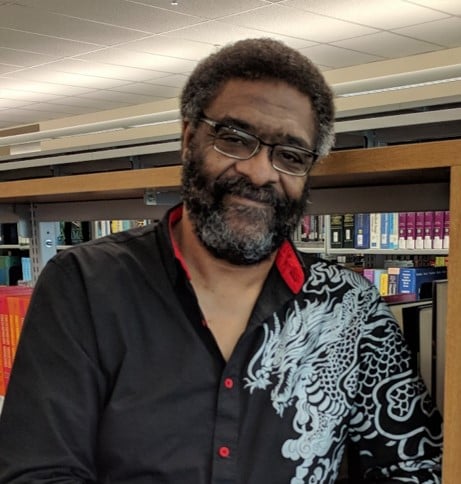 Marvin Patton, instructor of child development, Merced College
Marvin Patton, instructor of child development, Merced College
What's new: This semester I am using a new remediation strategy in my online Child Development courses in Canvas. I am incorporating EdPuzzle videos into Canvas Mastery Paths as a means to redirect low-performing students toward “second chance” review and scoring opportunities. Mastery Paths is an application in Canvas that automatically redirects low-scoring students to remedial activities, based upon their assessment scores. EdPuzzle is a system for embedding quiz questions and narrative content strategically into pre-existing educational video segments. So students view short video sequences and then respond to questions about the content they just reviewed. When these two applications are used in conjunction, Mastery Paths will automatically send low-scoring students to review material and supplementary quiz questions presented via EdPuzzle, and their EdPuzzle quizzes are scored automatically in Canvas.
Why: The purpose is to promote equity in the curriculum. I teach at a community college, with a population of diverse learners. Students arrive at community colleges with widely varying skills and study habits. Many could be encouraged and motivated through innovative and fun remediation strategies. Further, this method is time efficient for both the instructor and the students. Because the EdPuzzle quizzes are scored automatically in Canvas, students receive immediate feedback; no delay is required for instructor grading.
I anticipate that my lower-skilled students will enjoy the EdPuzzle quizzes as a low-stress, focused way to revisit concepts they may have missed during their initial studies. Having just received a low exam score, students need support and encouragement to get refocused, recover some points and “get back in the game.”
Measuring success: Survey results from last term show that students are receptive to this approach. They enjoy the video format and appreciate the opportunity to increase their point total. They report better comprehension of key concepts after participating in these supplementary activities. The Canvas course management system has built-in student performance measures so that individual students can be tracked throughout the term.
Why experimentation is valuable: Undoubtedly, online course work is the path of the present and future. Digital platforms support educational innovations that can result not just in equivalent but better learning experiences as compared with campus-based classes. Most of my college students were born in the digital age. They are familiar with and receptive to media such as video and web-based apps. Furthermore, it just makes good sense to tap in to the wealth of information available on the web for educational purposes.
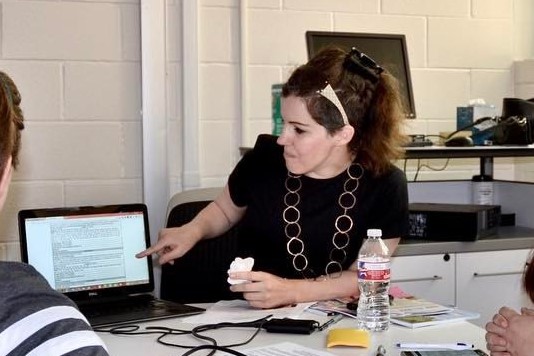 Peggy Semingson, associate professor of curriculum and instruction, University of Texas at Arlington
Peggy Semingson, associate professor of curriculum and instruction, University of Texas at Arlington
What's new: This semester I am increasing my strategic use of a predictive analytics software tool, the Inspire for Faculty tool from Civitas Learning. With this powerful tool I am sending strategic “nudge” emails to students as a type of virtual outreach. This initiative is twofold, involving first the use of data provided by the software to intervene and personalize outreach via email. The second aspect of the tool involves sending carefully crafted personalized emails to each student that facilitate communication with myself and provide nudges for individual students to take action that will help them to be successful in the course.
Why: Predictive analytics allows me, the instructor, to gain specific and targeted insight into each student’s engagement and interaction with the learning management system (e.g. Blackboard at my university). The data helps me to gauge overall student engagement with the course, at a glance. It also allows insight into other data that informs how I might compose a nudge email message to students. Nudges encourage students to reflect and take action. Second, the email function in the tool allows me to include each student’s name, lending a bit more personalization.
I’m hoping to gain expert skill with this tool for virtual outreach, while also helping students to communicate more with me and reach their learning goals.
Measuring success: Measurement involves a few things. A log tracks how many emails I send and what type of email the instructor sends. I may end up scheduling this to be sure I am using the data tool consistently and reliably. Another sign of success is I am seeking to increase the number of replies I receive from students. One thing I do is a “call to action” statement at the end of the email, encouraging them to reply with an update of how they are doing. It’s encouraging when students reply with what is working in the online course, what needs clarification and anything I can do to help them with their learning. The nudge emails are also a chance for me to do a bit of email mentoring and provide support to students through customized advice and suggestions.
Why experimentation is valuable: A key reason for experimenting with digital technology is to help in reaching out to students and personalizing their learning. I seek to differentiate my digital outreach to students by using the Inspire for Faculty tool in strategic ways.
 Parrish Waters, assistant professor of biology, University of Mary Washington
Parrish Waters, assistant professor of biology, University of Mary Washington
What's new: I am using a formative assessment tool (BluePulse) in my Human Anatomy course this semester. This tool is not new to me, but I am taking steps to methodize my implementation of this tool this semester and will examine if student participation with this tool is related to the class’s performance in, and satisfaction with, the course. I have used this tool for three years in my Human Anatomy class and have received consistent positive feedback from students. This semester I am increasing my efforts to encourage student engagement with BluePulse, and will assess its efficacy to increase student engagement and performance.
I have two primary objectives for this exercise: to gain a sense of how my class responds to my teaching and to respond to this feedback to make my course more effective at conveying curriculum to students. Each week, students are invited to answer three Likert-scale questions that I post to BluePulse. These questions poll how engaging they find the course, how accessible they find the curriculum and how suitable they find the pace of my lectures. They are also invited to provide open feedback on any aspect of the course.
Measuring success: I will review the feedback I receive each week with the class and use this feedback to direct my teaching. I hope that by actively incorporating their feedback into my class and demonstrating that it informs my pedagogy, I will increase student engagement with BluePulse. All answers and comments are anonymous. At the end of the semester, I will collect the feedback reports from each week and examine the number of responses I get, as well as the average score for each question. I will map this onto class performance on weekly quizzes and exams. I will consider this exercise a success if I increase student engagement with this tool.
Critical feedback is an important skill, and this activity provides a great exercise for them to practice this. I also hope to see an increase in performance in the course by adjusting my teaching pace and practices according to their feedback. While there is a limit to the plasticity of my teaching, small adjustments to my pace or the strategies I use in teaching can make a difference in student engagement and comprehension.
Why experimentation is valuable: Bringing a digital tool into my classroom allows me to extend my interaction with students outside of the classroom. While I feel very comfortable in face-to-face encounters, I realize that many of my students have a high level of communication apprehension. Digital tools provide a voice for these students. Also, it is great practice to introduce an environment that fosters constructive critical feedback. Digital tools provide a familiar, space where students can more comfortably practice this skill.







